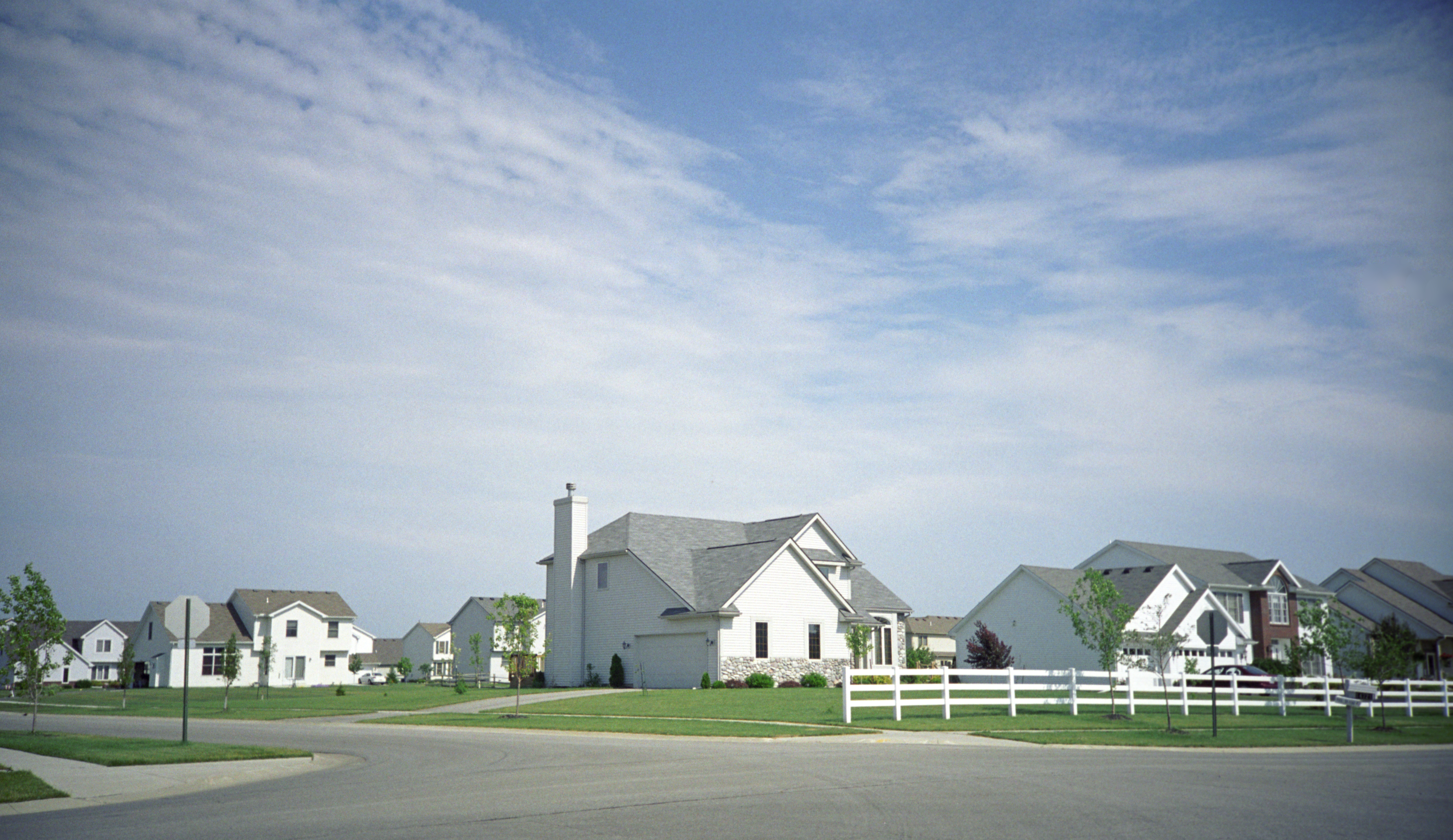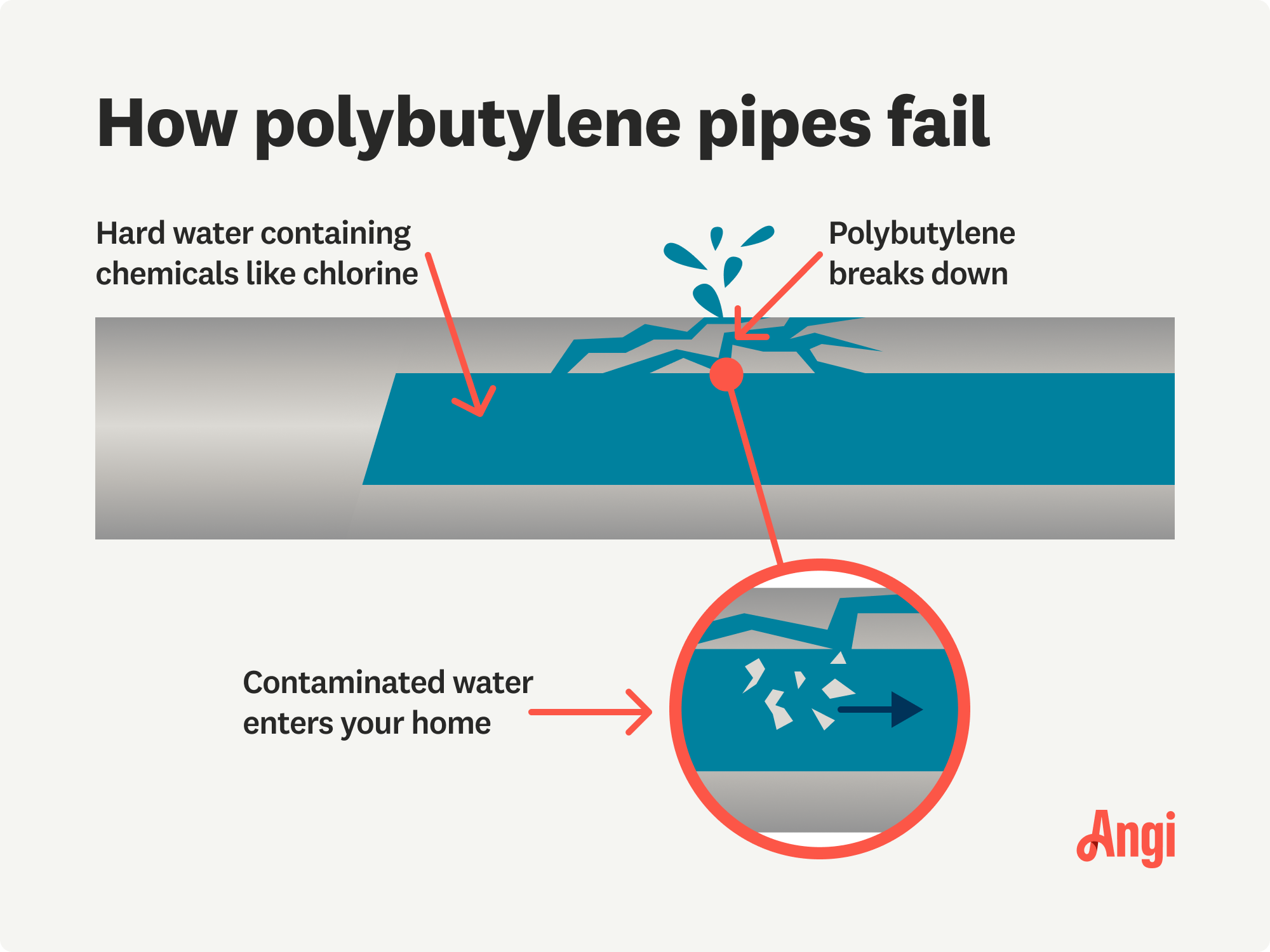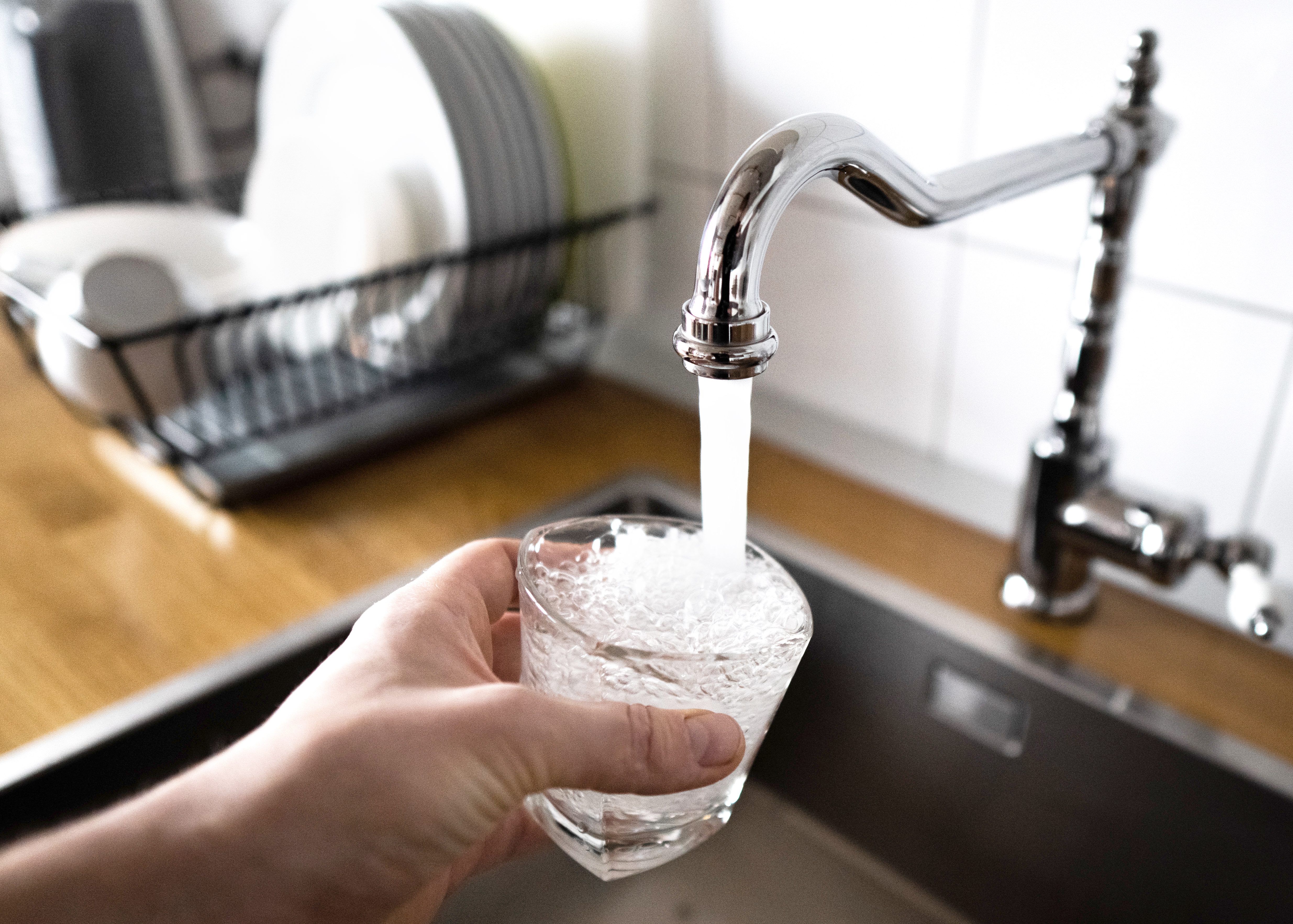
Discover the leading factors affecting your main water line replacement cost in Columbus, including length, material selection, and installation details.
Replacing a polybutylene pipe costs on average $15,000, but if you need to repipe a whole home expect to pay much more.


Although once popular in homes, polybutylene pipes have many downsides, including a relatively short lifespan and deterioration from municipal water.
Polybutylene pipes have a lifespan of 10 to 15 years, but if you have them in your home, you should replace them immediately.
Labor to replace pipes costs between $150 and $250 per linear foot and depends on the pipe’s accessibility and the new pipe material.
You can often save time and money by paying the higher up-front cost of replacing all your polybutylene pipes at once rather than replacing pipes over the course of a longer period.
The cost to replace polybutylene pipes runs between $300 and $5,100, with the average homeowner spending $1,200 on polybutylene pipe replacement. Polybutylene pipes are no longer used in new construction because they are prone to defects, leaks, and pipe bursts. If you still have these pipes in your home, you should replace them as soon as possible.
Polybutylene pipe replacement costs can vary widely, based on the type of pipe you replace them with, the extent of the existing piping, and any repairs to damage caused by the old pipes. If you have to repipe your entire home, you could spend as much as $15,000.
Shaddai Plumbing team is great! They are very professional, they keep their word, they complete job without delays. Great quality. We had to replace old water pipes across 2-story home and their service was great. We asked to add additional water switches to be able to switch hot/cold water on and off in separate parts of home - and they did it. Now if it will be leak or other problem - we can switch off kitchen area, or second floor without impacting other parts of our home. Highly recommended!
Polybutylene pipes were once a popular solution in homes. They were easy to install, affordable, and resistant to freezing. This popularity among home builders means lots of homes built (or repiped) between the late 1970s and mid-1990s have polybutylene pipes.
However, as time went on, plumbing professionals discovered that polybutylene pipes have a lot of downsides. The plastic pipes deteriorate quickly from the fluoride and chlorine in the municipal water supply, eventually leaking or bursting. Many homeowners found that the pipes wouldn’t last more than 10 to 15 years.
The good news? Because of their short lifespan, it’s not common to find polybutylene pipes in older homes anymore. If they were installed in the mid-1990s, most would have lasted until 2010-ish, at best. Homeowners insurance policies have also targeted homes with these pipes over the last decade, requiring that they be replaced to keep the policy in force. That means there’s a good chance your home doesn’t have polybutylene pipes.
However, some homes may still have sections of polybutylene pipes or may be piped entirely with the material. If that’s the case for your house, we highly recommend replacing the polybutylene pipes now, rather than waiting for the impending water damage to occur. The cost to repipe a home is steep—but it’s less than fixing the effects of extensive water damage (and then still having to repipe anyway).
Replacing polybutylene pipes as they age is a good preventative measure to ensure they don’t leak or cause issues in the future. Polybutylene pipes have an increased risk of failing without any signs, hence their discontinuation in the mid-1990s.
Since homes don’t use these pipes anymore, if you do have them installed in your house, they’re already approaching the 30-year mark at least. Add to that the fact that they’re prone to deterioration and you have a recipe for failure. When in doubt, it’s best to invest in new pipes made from CPVC, PEX, or copper piping materials.

The two main costs associated with polybutylene pipe replacement are the materials of the new pipe and the labor to remove old pipes and install the new ones. In some cases, there may be additional costs to factor in.
New pipe materials can cost anywhere from $0.50 to $8 per linear foot. The material itself does not make up the bulk of polybutylene pipe replacement; instead, the high project costs largely come from the labor.
Pipe replacement costs an average of $150 to $250 per linear foot. With materials maxing out at around $8 per linear foot, labor clearly accounts for a large portion of the cost.
On average, hiring a plumber costs between $45 and $200 per hour, and most will charge a service fee just to come in the door. If you have a sudden leak, you may need to hire an emergency plumber to fix the issue ASAP. Emergency plumber costs range from $70 to $600 an hour, which is why it’s best to tackle this replacement before it becomes critical. Simple pipe replacement may only take a couple of hours, but repiping an entire house can take a week or more.
If you aren’t sure if your home has any polybutylene pipes, you might want to hire a plumber to conduct a thorough inspection. Plumbing inspections cost between $100 and $1,375, depending on the extent of the inspection.
Even if they don’t find polybutylene pipes to replace, they may discover other plumbing problems you weren’t aware of—meaning they can fix them now before the problems get worse and lead to costly water damage.
On the other hand, you may know your home has polybutylene pipes—possibly because one has just burst and led to severe water damage. If that’s the case, not only will you need to budget for the cost to replace the pipes, but you’ll also need to cover the cost of water damage restoration.
Several factors can impact how much you’ll spend to replace polybutylene pipes throughout your home, including the type of replacement pipe you install and the extent of work required.
In general, you’ll choose between three types of pipe when replacing polybutylene pipes: CPVC, PEX, and copper piping.
| Type of Pipe | Cost Per Linear Foot |
|---|---|
| Chlorinated polyvinyl chloride piping (CPVC) | $0.50–$1 |
| Polyethylene (PEX) piping | $0.40–$2 |
| Copper piping | $2–$8 |
The plumber you hire can recommend the best pipes for your needs, but here’s a quick breakdown of the three options:
Chlorinated polyvinyl chloride piping (CPVC): This is the most affordable and common type of pipe for pipe repair, at $0.50 to $1 per linear foot. It’s stronger than regular PVC pipes (often used for waste drainage), can handle high temperatures, is resistant to corrosion, and can last from 50 to 75 years.
Polyethylene (PEX) piping: PEX piping is a flexible tubing that won’t rust or corrode. Because it’s coiled, it’s great for navigating the tight spaces and twists and turns within your walls. Prepare to spend between $0.40 and $2 per linear foot. Though PEX is too new to say with certainty, experts believe it can last between 80 and 100 years.
Copper piping: Copper is the most expensive option at $2 to $8 per linear foot, but it’s also the highest quality. These durable pipes can last 100 years—or more, in some cases.
How much you spend on replacing polybutylene pipes depends on how pervasive this material is throughout your home. If your whole home uses polybutylene pipes and it’s 2,000 square feet or more, you might spend up to $15,000 to replace everything.
On the other hand, replacing polybutylene pipes on a single fixture can be much more affordable. On average, repiping a single fixture runs between $70 and $1,000. Luckily, it’s much more likely that you have only one or two fixtures with this type of pipe.

Labor rates for repiping can vary significantly, depending on a number of factors. First and foremost, where you live will impact plumber rates. Areas with a higher cost of living—such as cities and coastal states—have higher labor costs than suburbs and rural areas.
Other factors can also impact labor rates. Pipe bursts during extreme cold seasons, for instance, might drive up plumbers’ emergency rates, as they’re likely getting multiple calls about frozen pipes, and can charge higher rates for their services. The accessibility of the pipes can also play a role in the labor cost; if the plumber needs to take out drywall to access the pipes, expect labor costs to go up significantly.
The cost to replace polybutylene pipes may not be all you have to budget for. If your pipes have leaked or burst, you may also have to repair your ceiling, drywall, and floors. This could require other professionals, depending on the extent of the water damage.
These costs can vary significantly depending on the extent of damage, but here’s a general idea of what you might spend:
| Type of Repair | Average Cost |
|---|---|
| Ceiling | $450–$1,600 |
| Drywall | $300–$850 |
| Floor | $250–$550 |
In addition, you may need to budget for appliance repair costs (between $100 and $250, unless you need to replace a broken appliance) and mold remediation costs (from $1,125 to $3,345).
Looking for ways to cut down the cost of replacing polybutylene pipes? Here are a few ways to save on this plumbing project:
Don’t do it piecemeal. If you discover one fixture in your home has polybutylene pipes, don’t simply have the plumber replace those. Conduct a full investigation of your home’s pipes and replace any made from this material. The cost may be higher upfront, but you’ll spend a lot more by calling a plumber out repeatedly to replace burst pipes as you find them.
Use CPVC for the replacement. The cheapest pipe material you can use for plumbing fixtures is usually CPVC. Expect to spend between $0.50 and $1 per linear foot on materials.
Do the work yourself. Most of the cost to replace polybutylene pipes comes from the labor itself. If you have the tools at home—and an advanced understanding of plumbing—you could tackle this job on your own. However, make sure you know what you’re doing; a simple mistake could mean you’ll still have to call a plumber and spend even more money to fix what you did wrong.
Hiring a plumber near you to replace polybutylene plumbing will cost you $45 to $200 per hour, which will make quite a dent in your budget. However, if you attempt to replace the pipes yourself and make a mistake, you’ll end up spending much more than that to redo your work or repair any resulting water damage.
Replacing polybutylene pipes is a time- and labor-intensive job. Here’s why hiring a pro is the best choice:
Professionals know how to handle polybutylene to prevent leaking and cracking.
They will determine whether your project requires a permit and can usually obtain one on your behalf.
Pros have specialized equipment to remove polybutylene pipes and replace them with PVC ones.
A DIY mistake could result in water leaks and potentially serious damage to your home.
A licensed plumber will offer warranties for their work and carry liability insurance.
Expert plumbers can replace your polybutylene pipes safely and efficiently.
Replacing pipes isn’t a DIY-friendly job unless you have professional plumbing experience. But you can take on smaller tasks to save money, like the following:
Preparing your home by removing clutter and debris around access points.
Repairing small areas of drywall.
Repainting drywall where necessary.
Research different pipe materials, such as CPVC, PEX, and copper, so you can discuss your options with a pro.
Request an inspection to determine the extent of polybutylene piping in your home.
Be prepared to talk with a plumber about additional plumbing needs you want to address at the same time as the pipe replacement.
Home is the most important place on earth, which is why Angi has helped more than 150 million homeowners transform their houses into homes they adore. To help homeowners with their next project, Angi provides readers with the most accurate cost data and upholds strict editorial standards. We extensively research project costs to develop the pricing data you see, so you can make the best decisions for you and your home. We rely on reputable sources, including the U.S. Bureau of Labor Statistics, academic journals, market studies, and interviews with industry experts—all to ensure our prices reflect real-world projects.
Want to help us improve our cost data? Send us a recent project quote to [email protected]. Quotes and personal information will not be shared publicly.
From average costs to expert advice, get all the answers you need to get your job done.

Discover the leading factors affecting your main water line replacement cost in Columbus, including length, material selection, and installation details.

Learn about main water line repair costs in Columbus and what affects pricing to be prepared before you start getting estimates.

Learn how much plumbers cost in Columbus, Ohio. Discover pricing for faucet repairs, pipe work, and emergency services, plus how you can save money.

Insulating your pipes is a simple DIY project that can prevent costly damage and lower your energy bills. Learn how to insulate your pipes yourself with this easy guide.

Learn how to remove a bathtub drain for cleaning or replacing, whether you’ve got a simple toe-touch stopper or a more complicated trip-level model.

Need to stop a plumbing leak quickly and minimize water damage in your home? Buy yourself some time with these temporary fixes for a leaking pipe.